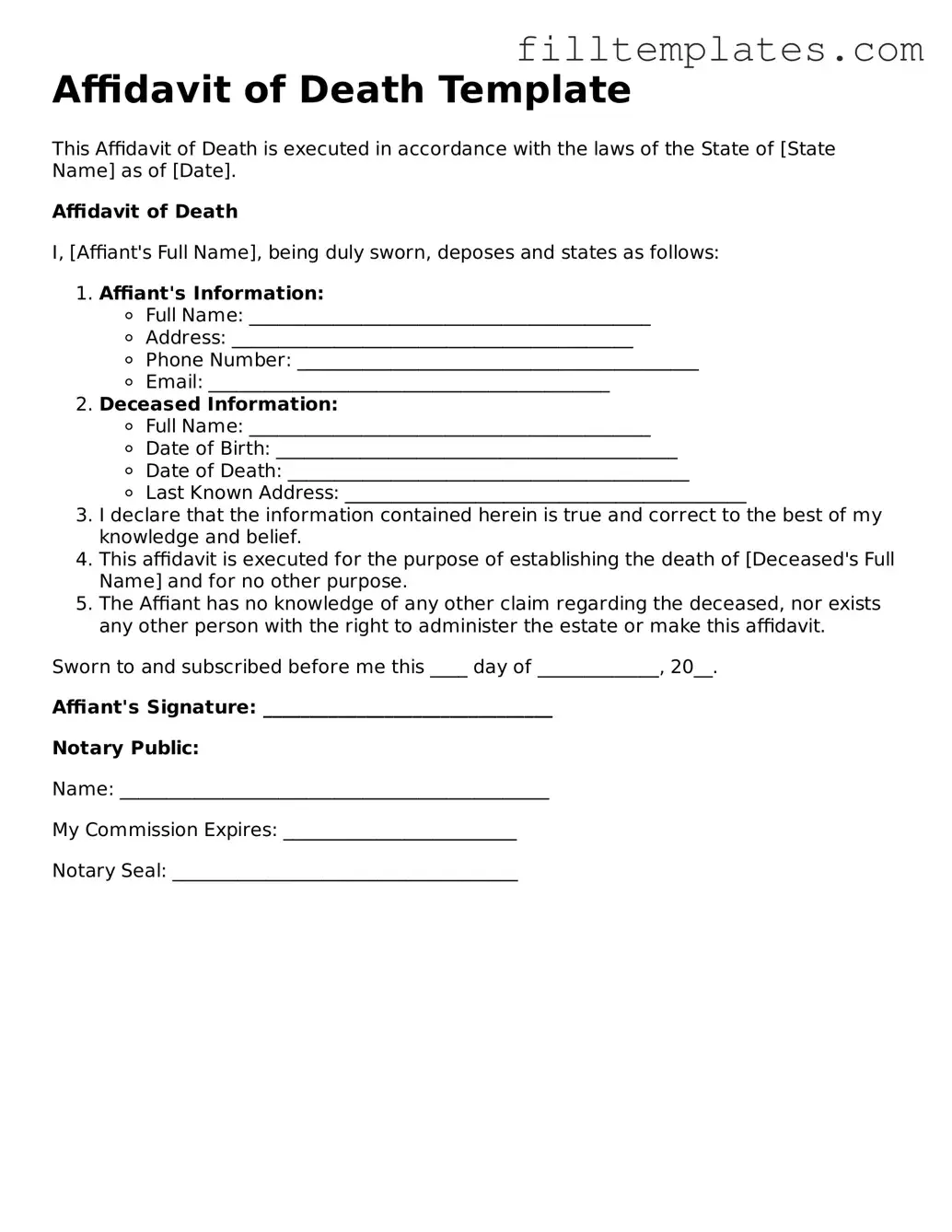Affidavit of Death Template
This Affidavit of Death is executed in accordance with the laws of the State of [State Name] as of [Date].
Affidavit of Death
I, [Affiant's Full Name], being duly sworn, deposes and states as follows:
- Affiant's Information:
- Full Name: ___________________________________________
- Address: ___________________________________________
- Phone Number: ___________________________________________
- Email: ___________________________________________
- Deceased Information:
- Full Name: ___________________________________________
- Date of Birth: ___________________________________________
- Date of Death: ___________________________________________
- Last Known Address: ___________________________________________
- I declare that the information contained herein is true and correct to the best of my knowledge and belief.
- This affidavit is executed for the purpose of establishing the death of [Deceased's Full Name] and for no other purpose.
- The Affiant has no knowledge of any other claim regarding the deceased, nor exists any other person with the right to administer the estate or make this affidavit.
Sworn to and subscribed before me this ____ day of _____________, 20__.
Affiant's Signature: _______________________________
Notary Public:
Name: ______________________________________________
My Commission Expires: _________________________
Notary Seal: _____________________________________
